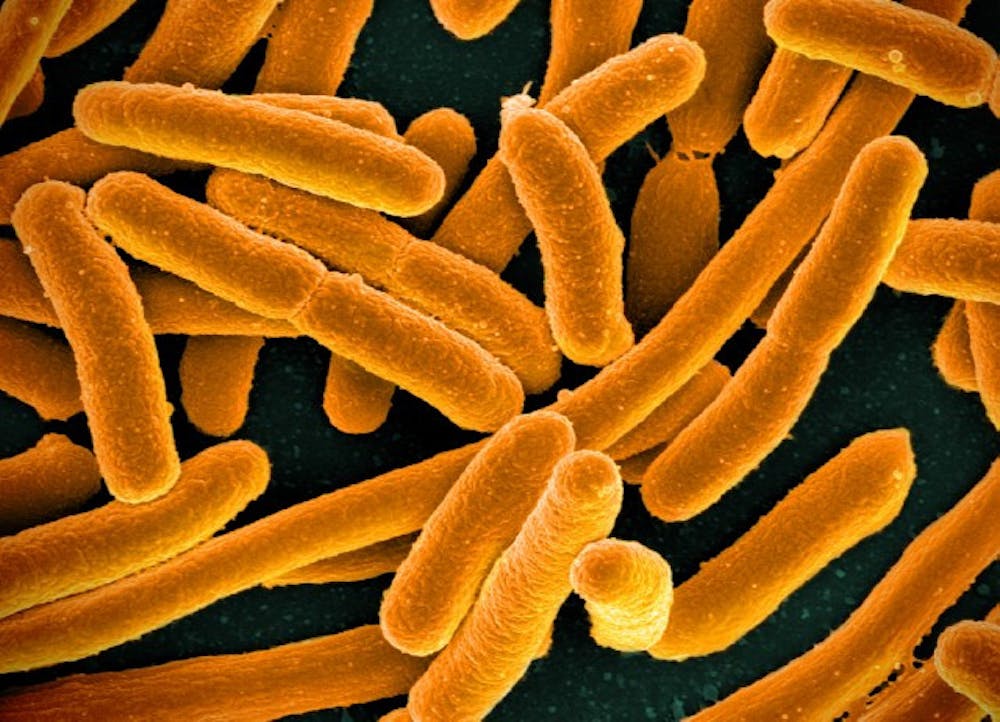On Tuesday, Sept. 5, Grossman School of Medicine of New York University (NYU) professor Damian Ekiert presented his research on the proteins that transport lipids across the cellular membranes of gram-negative bacteria.
The special seminar, hosted by the Department of Biology, was titled “Bridges, Tunnels, and Ferries: How Bacteria Move Lipids Between Membranes.”
Gram-negative bacteria, a class of bacteria with two cell membranes, includes Escherichia coli and Mycobacterium tuberculosis. With two membranes, these bacteria are better able to resist antibiotics. However, gram-negative bacteria still need to transport lipids across the space between the membranes, known as the periplasm. Ekiert likened the trio of protein-based options employed for this task to transport between boroughs in New York City.
“You got to get from one landmass to another across some sort of aqueous gap, very much like the periplasm,” he said.
A class of proteins called mammalian cell entry (MCE) proteins was suspected to play a large role in this infrastructure, but their exact function was unclear. Bacteria with knockout mutant MCE proteins were known to be less virulent, but the exact mechanism by which MCE proteins increase virulence has been elusive. Ekiert used an arsenal of new technologies to investigate this open question.
With cryo-electron microscopy (Cryo-EM), a new tool to determine protein structure by super-imposing 2D images of supercooled protein samples, Ekiert was able to discover the shape of MCE proteins in E. Coli. His team first turned their attention to MlaD, a poorly understood E. Coli MCE protein, and were able to determine its structure.
“[Cryo-EM has] suddenly made it easier to determine the structures of a lot of proteins that were impossible before,” Ekiert said. “Up until this point, everyone thought that MCE proteins were just this small monomeric domain floating around in the periplasm and our structure clearly revealed that six copies of [MlaD] come together to form this homohexameric [six-way symmetric] ring.”
Cryo-EM further determined that MlaD is part of a larger transport protein that straddles the inner membrane of bacterial cells. They even identified a potential “ferry” protein that carries phospholipids from the pump to a receiving protein on the outer membrane.
Ekiert’s lab also explored a much larger protein, LetB, which Ekiert described as seven MlaD proteins stacked on top of each other. Using gene-editing techniques, they confirmed LetB’s role as a lipid channel. The lab-engineered cells with modified LetB genes produced tunnels with fewer than seven units. Cells with fewer than five rings were significantly more susceptible to detergents — a susceptibility common for cells with outer membrane defects. They performed additional tests to confirm that the lining of the tunnel was adapted to carry lipids and concluded that the LetB tunnel transports phospholipids — the central component of cell membranes — across the periplasm.
Cryo-EM, which can show multiple states of proteins, also revealed that the LetB tunnel is highly dynamic.
“[The proteins] open and close the central pore almost like the diaphragm of a camera,” Ekiert said.
It is still unclear, however, what the purpose of these movements is. Ekiert speculated that they could toggle the tunnel on and off or push lipids along.
Although much is still unknown about these transport systems, Ekiert already has ideas about the applications of his research. One proposal he had was to develop new antibiotics that would target lipid transport systems. This method could make bacteria more sensitive to existing antibiotics by rendering the outer membrane more permeable.
It is also possible that these biological molecules could inspire nanoengineers.
“Because [MCB proteins] make tunnels … could we engineer them to have useful material properties? I honestly don’t know what that would be, but I’m always mentioning it to people hoping that someone one day will have an idea,” he mused.
Andy Mao, a third-year biology graduate student who attended the talk, was among this target audience.
“[I’m] just generally interested in aspects of bacteria and lipid transportation even though … my thesis is not on that. But, I just thought coming here and then knowing more about science, in general, might help with my career,” he explained. “[The talk] definitely broadens my perspective on different ways of lipid transportation.”

















